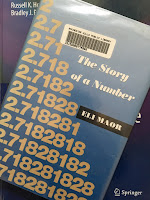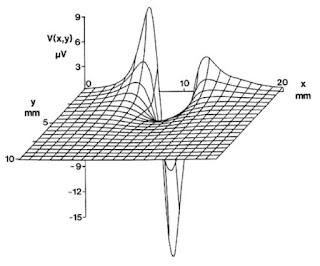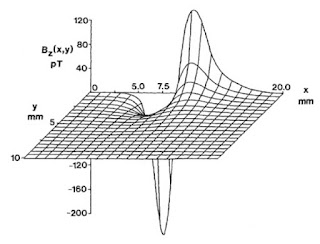 |
| Quantum Physics, by Stephen Gasiorowicz. |
The spectrum of power per unit area emitted by a completely black surface in the wavelength interval between λ and λ + dλ is … a universal function called the blackbody radiation function. …The description of [this] function …by Planck is one of the foundations of quantum mechanics… We can find the total amount of power emitted per unit surface area by integrating10 Eq. 14.32 [Planck’s blackbody radiation function]…[The result] is the Stefan-Boltzmann law.As I was reading over this section recently, I was struck by the footnote number ten (present in earlier editions of our book, so I know it was originally written by Russ).
10This is not a simple integration. See Gasiorowicz (1974, p. 6).This is embarrassing to admit, but although I am a coauthor on the 4th edition, there are still topics in our book that I am learning about. I always feel a little guilty about this, so recently I decided it is high time to take a look at the book by Stephen Gasiorowicz and see just how difficult this integral really is. The result was fascinating. The integral is not terribly complicated, but it involves a clever trick I would have never thought of. Because math is rather difficult to write in the html of this blog (at least for me), I will explain how to evaluate this integral through a homework problem. When revising our book for the 4th edition, I enjoyed finding “missing steps” in derivations and then creating homework problems to lead the reader through them. For instance, in Problem 24 of Chapter 14, Russ and I asked the reader to “integrate Eq. 14.32 over all wavelengths to obtain the Stephan-Boltzmann law, Eq. 14.33.” Then, we added “You will need the integral [integrated from zero to infinity]
.
Below is a new homework problem related to footnote ten, in which the reader must evaluate the integral given at the end of Problem 24. I base this homework problem on the derivation I found in Gasiorowicz. In our book, we cite the 1974 edition.
Gasiorowicz, S. (1974) Quantum Physics. New York, Wiley.This is the edition in Kresge library at Oakland University, and is the one I used to create the homework problem. However, I found using amazon.com’s “look inside” feature that this derivation is also in the more recent 3rd edition (2003). In addition, I found the derivation repeated in another of Gasiorowicz’s books, The Structure of Matter.
Problem 24 ½ Evaluate the integral given in Problem 24.Really, who would have thought to replace 1/(1−z) by an infinite series? Usually, I am desperately trying to do just the opposite: get rid of an infinite series, such as a geometric series, by replacing it with a simple function like 1/(1−z). The last thing I would have wanted to do is to introduce a dreaded infinite sum into the calculation. But it works. I must admit, this is a bit of a cheat. Even if in part (c) you don’t look up the integral, but instead laboriously integrate by parts several times, you still have to pull a rabbit out of the hat in step (e) when you sum up 1/m4. Purists will verify this infinite sum by calculating the Fourier series over the range 0 to 2π of the function
(a) Factor out e−x, and then use the geometric series 1 + z + z2 + z3 + …=1/(1−z) to replace the denominator by an infinite sum.
(b) Make the substitution y = (n+1) x.
(c) Evaluate the resulting integral over y, either by looking it up or (better) by repeated integration by parts.
(d) Make the substitution m=n+1
(e) Use the fact that the sum of 1/m4 from 1 to infinity is equal to π4/90 to evaluate the integral.
f(x) = π4/90 – π2 x2/12 + π x3/12 – x4/48
and then evaluating it at x = 0. (Of course, you know how to calculate a Fourier series, since you have read Chapter 11 of Intermediate Physics for Medicine and Biology). When computing Fourier coefficients, you will need to do a bunch of integrals containing powers of x times cos(nx), but you can do those by—you guessed it—repeated integration by parts. Thus, even if lost on a deserted island without your math handbook or a table of integrals, you should still be able to complete the new homework problem using Gasiorowicz’s method. I’m assuming you know how to do some elementary calculus—integrate by parts and simple integrals of powers, exponentials, and trigonometric functions—without looking it up. (Full disclosure: I found the function f(x) given above by browsing through a table of Fourier series in my math handbook. On that lonely island, you would have to guess f(x), so let’s hope you at least remembered to bring along plenty of scrap paper.)
I checked out the website for Gasiorowicz’s textbook. There is a lot of interesting material there. The book covers many of the familiar topics of modern physics: blackbody radiation, the photoelectric effect, the Bohr model for hydrogen, the uncertainty principle, the Schrodinger equation and more, all the way up to the structure of atoms and molecules. I learned this material from Eisberg and Resnick’s Quantum Physics of Atoms, Molecules, Solids, Nuclei and Particles (1985), cited several times in Intermediate Physics for Medicine and Biology, when I used their book in my undergraduate modern physics class at the University of Kansas. For an undergraduate quantum mechanics class, I like Griffith’s Introduction to Quantum Mechanics, in part because I have taught from that book. But Gasiorowicz’s book appears to be in the same class as these two. I noticed that Gasiorowicz is from the University of Minnesota, so perhaps Russ knows him.
P.S. Did any of you dear readers notice that Russ and I spelled the name “Stefan” of the “Stefan-Boltzmann law” differently in the text of Chapter 14 and in Problem 24? I asked Google, and it found sites using both spellings, but the all-knowing Wikipedia favors “Stefan”. I’m not 100% certain which is correct (it may have to do with the translation from Slovene to English), but we should at least have been consistent within our book.








